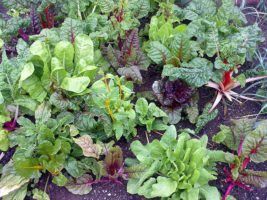

Environment
7 Tips For Growing a Greenhouse based Organic Vegetable Garden
How would you like to grow healthy and delicious organic fruits and vegetables in your own kitchen garden? Here are some tips to get you started with your own greenhouse.
1. Avoid Greenhouses Made with Synthetic Materials.
Many greenhouses have side panels made from various types of plastics and polycarbonates. For a truly organic garden, you should opt for a glass greenhouse. They come in all styles from self-standing to the lean to greenhouse style The material the panels are made from are important because moisture will accumulate on the panel’s surface and will drip on your plants.
2. Plan Your Garden Layout in Advance
Use graph paper to plot where each plant will be placed. “Companion planting” is not a new concept, and its use in your greenhouse can not be overemphasized. You will encounter a fair share of pest issues in your greenhouse and many of them can be avoided naturally by using companion planting.
– Onions and leeks can deter carrot fly.
– Nasturtiums chase away aphids.
– French Marigolds can keep blackfly and greenfly away from tomatoes.
– An Elder shrub deters mice.
Planting directly in the ground can lead to a problem with ants. Use peppermint, bay leaf, spearmint, or garlic to keep them away.
If you have a problem with slugs and snails, you can use a beer trap. They are attracted to the beer fragrance which leads them to take a sip, they get drunk and drown.
While you want to eliminate the harmful bugs, you want to attract the beneficial insects. Plants like Achillea and Buddleia, as well as flowering herbs like Rosemary, Dill and Lavender will help to attract hoverflies, lacewings, and ladybirds which are known pest devourers.
3. Start with Organic Soil
Don’t try to save money and risk the quality of the soil or organic material you add to your soil, including manure, sea products or compost. These additives act like fertilizer. They can increase the health of your soil and help to create a better environment for your plants to grow. But remember, different plants have different needs.
Be careful when starting your garden. If you’re planting directly in the soil, make sure the soil does not contain dangerous organisms or toxins. If you’re not sure, you can use a soil test kit which is available from most seed suppliers.
You can also sterilize the soil by putting the oil in an oven roasting bag and adding enough water to dampen the soil shut the bag and insert a meat thermometer into the soil. Heat the bag in a 200-degree oven and keep the soil at a temperature close to 170 degrees for 30 minutes.
The soil temperature should not reach the temperature of the oven within 30 minutes, however, it’s best to keep an eye on the thermometer, just in case. If the soil gets too warm, turn the oven temperature down or off if it’s near the end of the 30-minute cycle. Place the cooled, sterilized soil into the planters, pots, or directly in the ground.
4. Compost
Composting is one of the most important and affordable methods of fertilizing your garden. But you must remember to keep your compost organic. That means the items you toss in your compost should be organic. If anything in your compost contains chemicals, so will your compost.
5. Control the Weeds Before They Start to Grow
Place 1 to 2 inches of newspaper on top of the soil, covering it with the same quantity of soil. Don’t worry about getting the measurements exact, this is not an exact science. Just remember the thicker the paper, the more it will deter weeds.
Most newspapers use soy-based inks so they do not pose a danger to your plants. Do not use the glossy inserts because they are toxic and water cannot penetrate their glossy surface. Use a regular old newspaper. In time, it will decompose ad become a healthy additive to your soil.
6. Learn About Natural Herbicides
If you are ever hit with a massive bug infestation and you need an herbicide, one of the most tried and true methods is an organic soap mixture. Cheap lemon dish soap is the best to use for this since cheap brands use less of the costly toxic additives that costly brands use.
Mix one tablespoon of the soap into 1 gallon of water and pour it into your spray bottle or a sprayer. Apply to the top and bottom of the leaves. Reapply this mixture every week or two. This mixture also reduces the risk of some plant diseases. Here is a good piece on herbicides.
7. Pull Spent Plants From the Soil
After you’ve harvested your vegetables and fruit, don’t leave the plants in the garden. Pull them out as soon as possible and toss their remains in the compost bin for next year’s garden. Removing these plants will allow the soil to replenish itself and will discourage pests that will feed on the spent plant.


 Environment10 months ago
Environment10 months agoAre Polymer Banknotes: an Eco-Friendly Trend or a Groundswell?

 Environment12 months ago
Environment12 months agoEco-Friendly Home Improvements: Top 7 Upgrades for 2025

 Features9 months ago
Features9 months agoEco-Friendly Cryptocurrencies: Sustainable Investment Choices

 Features10 months ago
Features10 months agoEco-Friendly Crypto Traders Must Find the Right Exchange





























